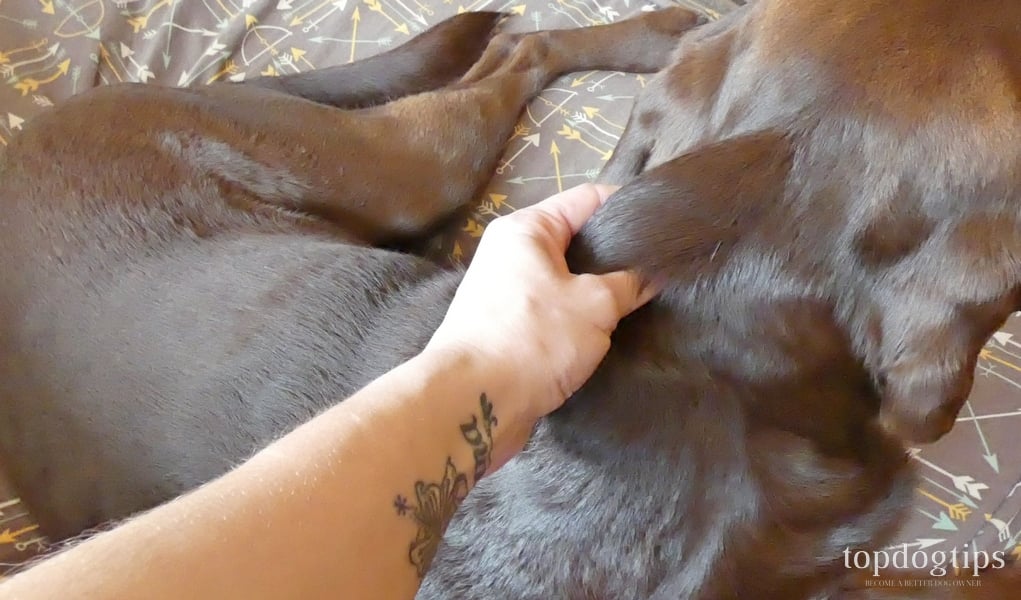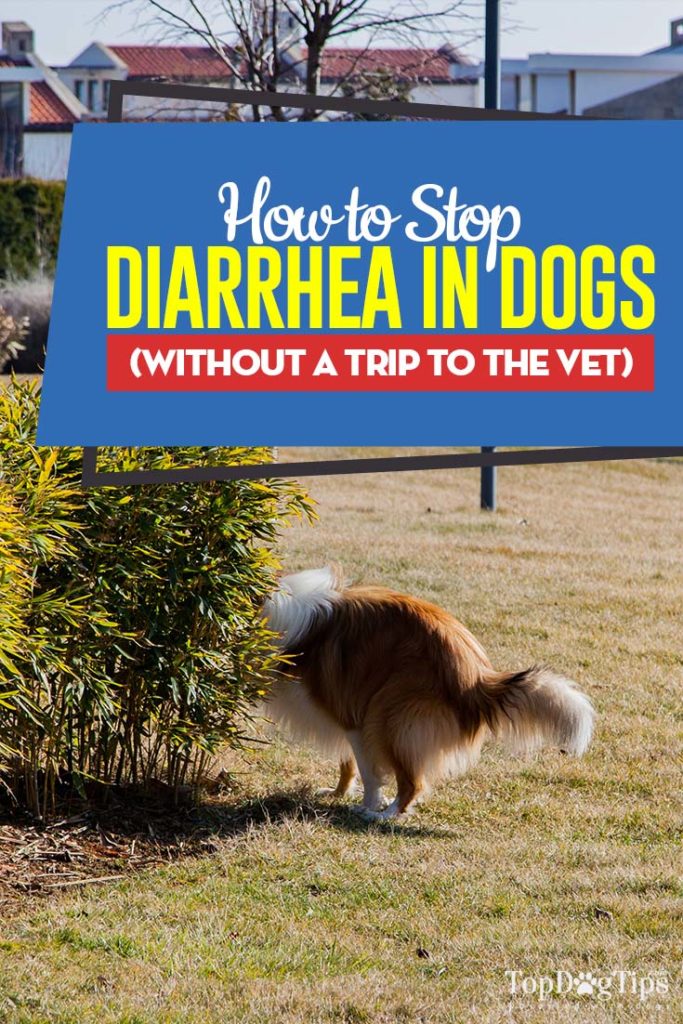Diarrhea in dogs must be taken seriously; observe your pet closely until their stools begin to harden. Regular diarrhea or one that lasts longer than few days requires a vet's attention. But when your pet is having a bout of loose stool for the first time, knowing how to stop diarrhea in dogs by yourself can save you a trip to the vet.
Diarrhea is the body’s way to remove toxins and cleanse itself, and all dogs will have diarrhea from time to time. Typically, it's a result of a minor stomach upset. Your dog probably ate something that didn't agree with him. It could also be due to an allergic reaction, stress or even a bacterial infection.
If your dog's diarrhea is paired with any of these below symptoms:
- Fever
- Bloating
- Lethargy
- Blood in the stool
- Vomiting
…you need to consult your veterinarian right away. Multiple symptoms is a sure sign that something more serious is going on. If your pet's loose stool has continued for more than 48 hours, bring them to see a vet because the dog can become dehydrated.
How to Stop Diarrhea in Dogs Without a Vet

1. Prevent Dehydration
When dealing with diarrhea in a dog, observe your pooch for signs of dehydration like decreased urine output, dark urine, urine with a strong odor and lethargy. Sometimes, you'll need to encourage your dog to drink, and water fountains are great tools for that.
Dehydration is a real risk during bouts of diarrhea, and if you think that your pup may be dehydrated, check by pinching the skin on the back of your dog's neck. If the skin doesn't return to normal immediately, your dog is likely dehydrated.
When you cannot get your dog to re-hydrate by drinking water on their own, you will need to make an appointment with your vet immediately to have IV fluids administered.
2. It's Time for Fasting
While you're trying to get your pet to drink plenty of water, they should not be eating anything for the first 12 hours when they have diarrhea. It's important to give the digestive tract a break and allow it to settle before making it process any more food.
Intermittent fasting is safe for dogs when done for a period of time, and will be your first tool in fighting diarrhea. All foods and snacks should be avoided completely, and you may consider adding bone broth, chicken broth, or beef broth to your dog's water, which will entice them to drink.

3. Temporarily Switch to a Bland Diet
Don't switch to regular dog food immediately, and start with a bland diet instead. The best bland diet ingredients for dogs are plain chicken breast and plain white rice.
After the initial 12 hours of fasting, feed your dog a 50/50 mix of plain boiled (or steamed) boneless chicken and plain cooked white rice. Feed this recipe until your dog's stool consistency returns.
Feed about 1/2 cup of this bland food for every 20 pounds of your pet's body weight. Instead of sticking with standard 2 meals per day, it's better to break the quantity up over 4-6 small meals per day.
Note: If your dog vomits after eating, or if you begin noticing any other symptoms, stop feeding the chicken and rice recipe and seek veterinary care immediately.
4. Gradually Switch Back to Regular Food
Once your dog's stool firms up and returns to normal, you can gradually resume their regular diet you've been feeding before. At first, feed them multiple smaller meals to slowly get the digestive system used to regular food again.
If you don't notice any symptoms after returning to regular diet, then there's nothing to worry about. However, sometimes the dog will experience diarrhea again, and there could be several causes: stomach or GI problems, the food itself doesn't agree with the dog, or there are ingredients your dog is allergic to.
When your dog gets diarrhea again, this time you'll need to see a vet regardless. You may need to put your pup on the elimination diet, or have several tests done at a vet clinic.
5. Switch to a Different Brand of Dog Food
Some dogs simply have sensitive stomachs and will often have loose stool or diarrhea. Once you've check with your veterinarian, consider switching to a dog food brand for diarrhea or sensitive stomach.
These often include novel proteins, are limited in ingredients, and generally contain foods that are more gentle on a dog's stomach. They'd also make a great alternative option on how to stop diarrhea in dogs.
Some of my favorite best dog foods for diarrhea and loose stool include:
| Preview | Product | Rating | |
|---|---|---|---|

|
Instinct Limited Ingredient Diet Grain Free Recipe... | 1,911 Reviews | Check Price |

|
Wellness Natural Pet Food Wellness Simple Natural... | 2,468 Reviews | Check Price |

|
Purina Pro Plan Sensitive Skin and Sensitive... | 12,109 Reviews | Check Price |
READ NEXT: The Best Dog Food for Dogs With Diarrhea and Loose Stools
Disclosure: We may earn affiliate commissions at no cost to you from the links on this page. This did not affect our assessment of products. Read more here and find full disclosure here.














